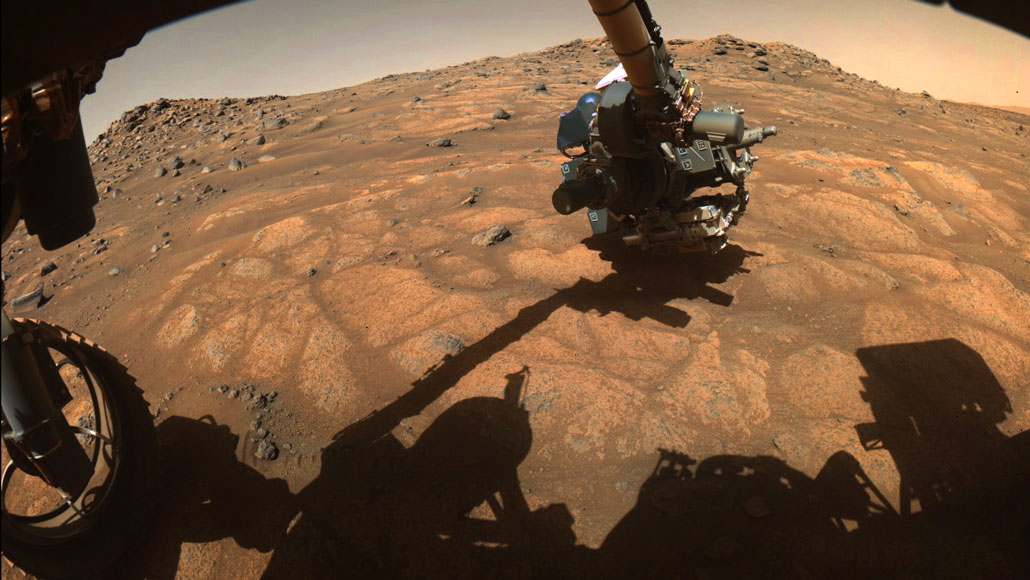NASA’s Perseverance Mars rover has begun its first science campaign
The robot will start scraping away at flat white stones that litter the crater floor

NASA’s Perseverance rover reaches its robotic arm out to examine flat, light rocks dubbed “paver stones” (pictured) in Jezero Crater on Mars on July 10. This is the rover’s first sampling location.
JPL-Caltech/NASA







